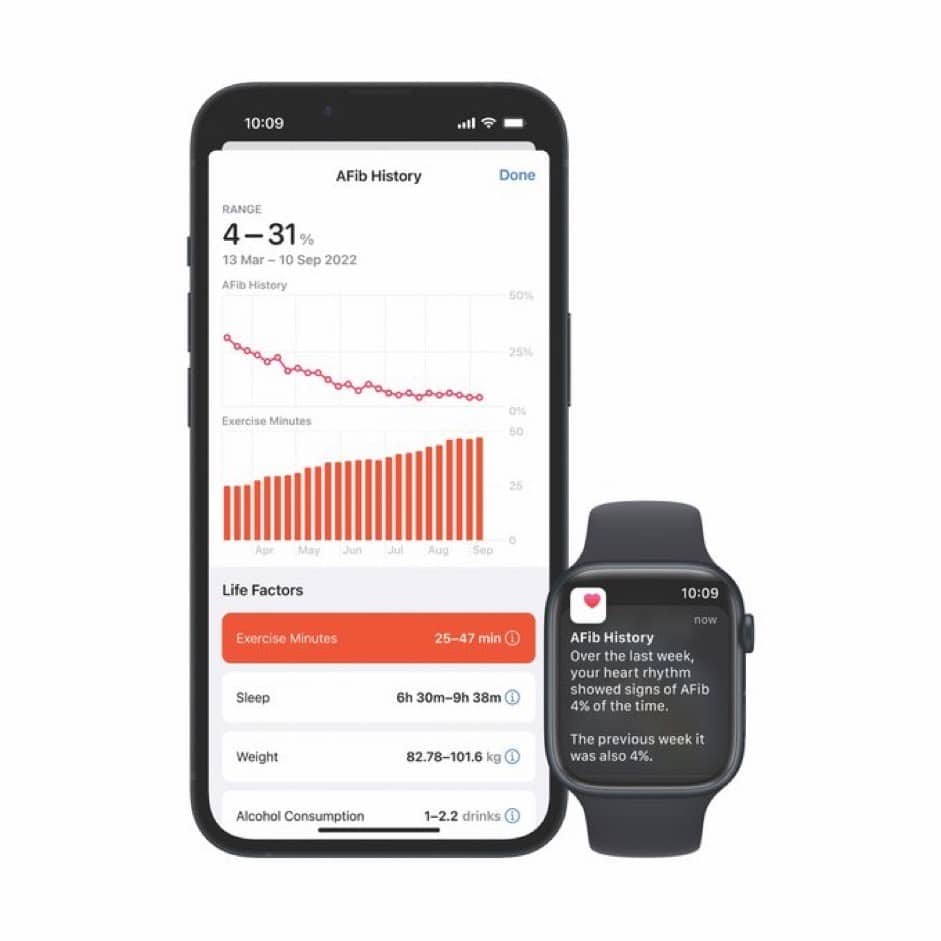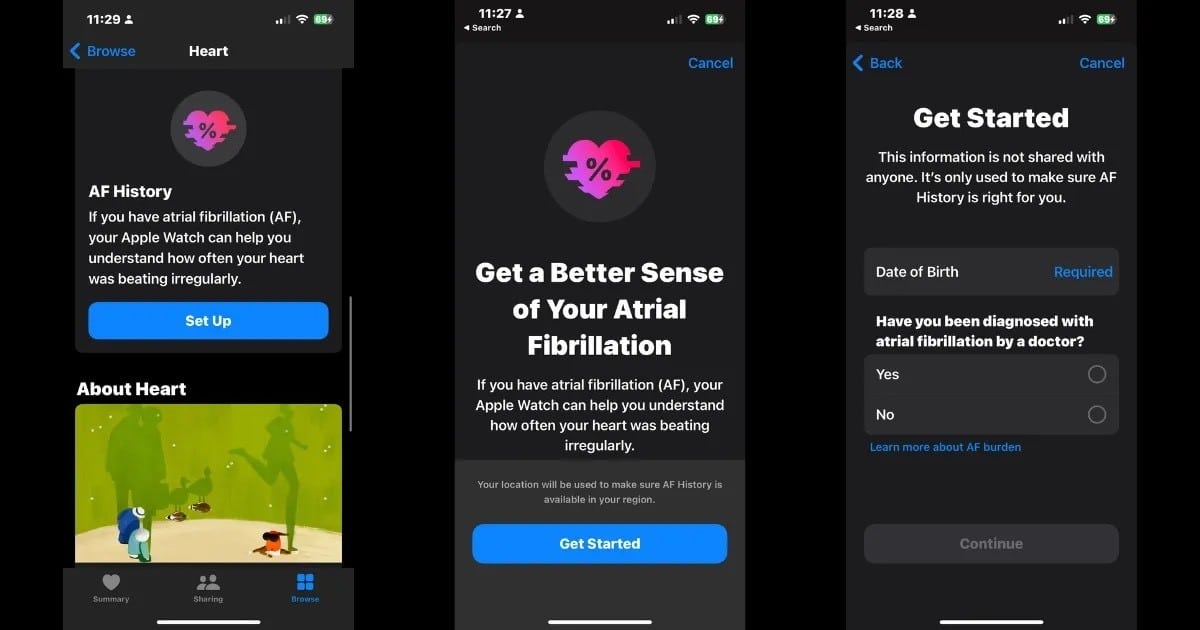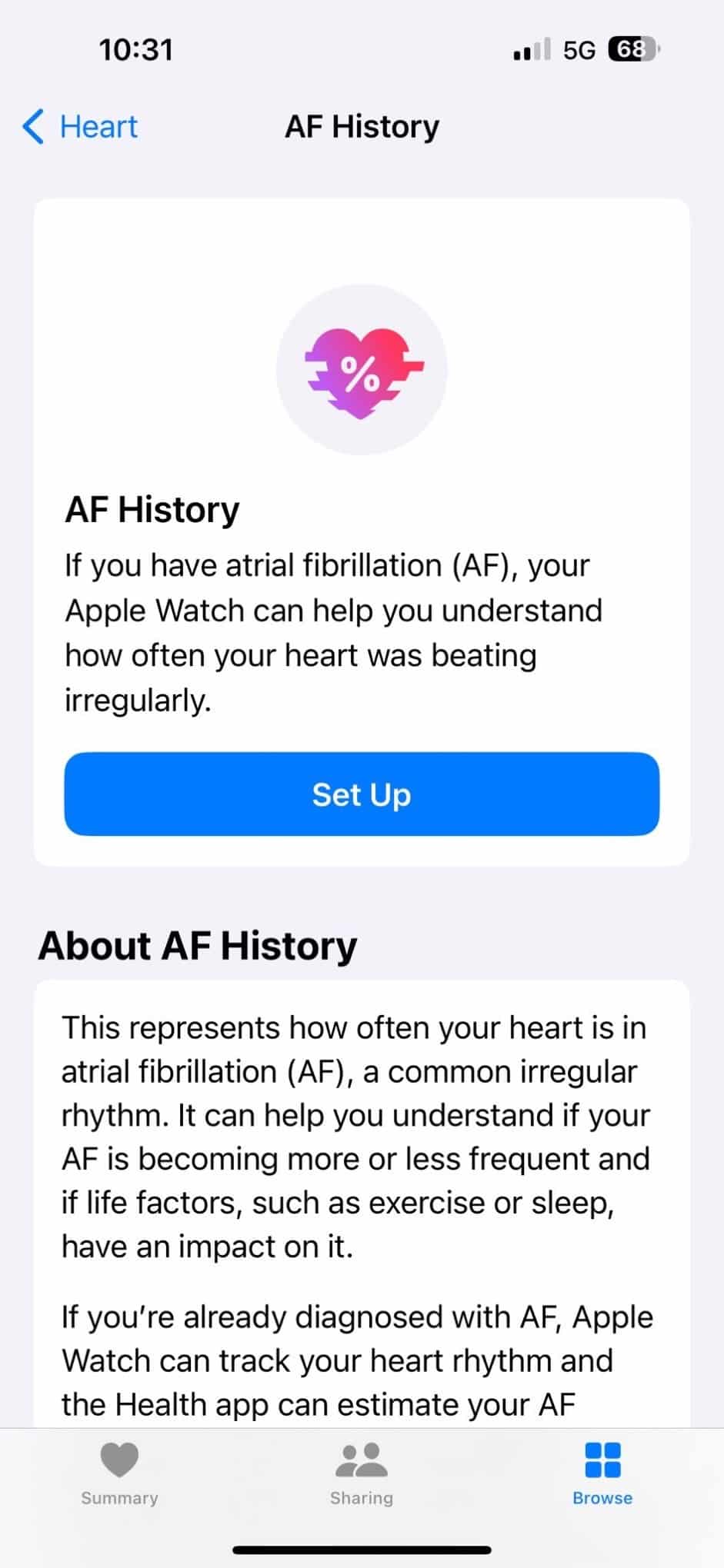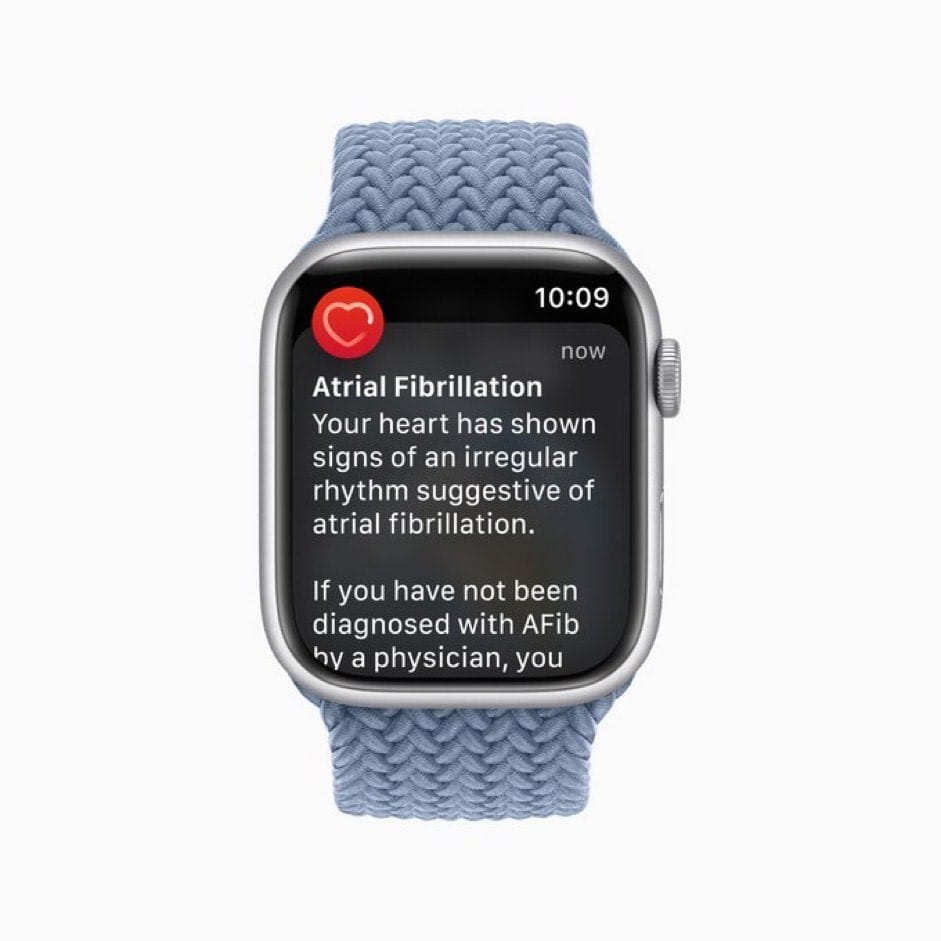HIGHLIGHTS
* Apple Watch now lets users in India track Atrial fibrillation (AFib) history.
* The feature uses ECG to function, which means Apple Watch Series 4 and newer models will support it.
* The first-of-its-kind feature for a wearable in India allows AFib patient to track their condition constantly.
* AFib History works with Apple Watch Series 4 and later for users on watchOS 9.
* Watch users in India also must ensure they are using iOS 16 on the iPhone.
* Apple’s support page clarifies that AFib History is strictly for users above 22 years.
Apple Watch is quite an efficient device when it comes to track of cardio health. Users can get an ECG on Apple Watch, keep track of cardio fitness and Atrial fibrillation (Afib) as well. The AFib history feature is now available in India on Apple Watch Series 4 and later for users on watchOS 9.
Apple Watch will now let Atrial fibrillation (AFib) patients track and stay on top of their condition. For the uninitiated, AFib is a chronic condition of irregular heart rhythm, which causes discordant beating of the upper and lower chambers of the heart. AFib History is a first-of-its-kind feature on a wearable in India.
It requires the ECG app and irregular rhythm notification on Apple Watch to function. It means only Apple Watch Series 4 and newer with WatchOS 9 will get the new feature.
Here is all you need to know about the first-of-its-kind wearable feature in India by Apple.
What is the AFib History Feature?

Atrial fibrillation (AFib) is a type of irregular heart rhythm where the upper chambers of the heart beat out of sync with the lower chambers. Symptoms of AFib may include rapid heartbeat, palpitations, fatigue, or shortness of breath.
It is a chronic condition but the amount of time for arrhythmia can change. For instance, regular exercise, healthy diet, weight can reduce the time your heart is in AFib.
As the name suggests, AFib history can keep track of the amount if time a user’s heart is in AFib. AFib History gives users a weekly estimate of the amount of time their heart shows signs of AFib, also known as AFib burden.
Users can track this long-term and share this information with their doctors for further examination or advice. What AFib history also does is that it helps users manage factors such as exercise minutes, weight, alcohol consumption, and sleep.
All these factors can impact the percentage of a user’s heart is in AFib. Users can also tap each life factor, then tap Log to manually log the details.
How to set up AFib history

Here are the steps to follow to set up AFib history
* On iPhone, open the Health app.
* Tap Browse, then tap Heart.
* Tap AFib history.
* Tap Set Up, then tap Get Started.
* Enter Date of Birth.
* Select Yes to indicate that you have been diagnosed with AFib by a doctor, then tap Continue.
* Tap Continue to learn more about AFib History, the results, and life factors.
* Tap Done.
How to view AFib history estimate?

Every Monday users receive weekly alerts on Apple Watch with the estimated percentage of time their heart showed signs of AFib from the previous week.
Users can also view their history in greater detail in the Health app.
*On iPhone, open the Health app.
*Tap Browse, then tap Heart.
* Tap AFib History. If users have AFib History saved to Favorites, they can also access it from the Summary tab.
AFib History estimate appears as a percentage. A lower percentage means your heart was in AFib less often, while a higher percentage means more often. AFib History will never show as 0%. Instead, it will show as “2% or less.”
Things to keep in mind

* You must have a physician’s diagnosis of AFib.
* You must wear your Apple Watch at least 12 hours a day for 5 days a week to consistently receive estimates.
*Heart Rate and Wrist Detection must be enabled on your Apple Watch.
*AFib History is not intended for use by people under 22 years old.

Faqs
1) Apple Introduces First-Of-Its-Kind AFib History Feature For Apple Watch Users in India.Details?
Ans) Apple has announced that Apple Watch Series 4 with WatchOS 9 users can now set up AFib History in India. For those who don’t know, AFib is a chronic heart condition that leads to the unsynchronised beating of the upper and lower chambers of the heart.
A study has shown that while the prevalence of AFib is low in India, Indian patients are also a decade younger than their Western counterparts. Therefore, the new feature from Apple will help such patients stay on top of their condition.
The symptoms include shortness of breath, palpitations, chest pain, dizziness, or rapid heartbeat, among others. In simpler terms, it causes your heart to beat faster. AFib is a chronic condition, but the duration of arrhythmia can be controlled. Lifestyle changes like a healthy diet, workout, and weight loss can considerably reduce the duration your heart is in AFib.
The new AFib History feature on Apple Watch lets users keep track of the time their heart is in AFib. The feature uses the advanced ECG electrodes sensor on Apple Watch Series 4 or later and the ECG app to track arrhythmia. It then presents a detailed weekly history of the amount of time the heart was in AFib, also known as AFib Burden. The feature also helps patients track various parameters to control the AFib Burden like weight, workout duration, sleep duration, and alcohol consumption.
However, on Apple Watch, patients need a doctor’s diagnosis to set up AFib History. Patients must report their symptoms to their doctors, who will then direct them to Electrophysiologist. For the uninitiated, Electrophysiologist is a cardiologist specialising in arrhythmias. Once the patient obtains the doctor consultation report, they can set up AFib History on their Apple Watch.
2) How to Set Up AFib History on Apple Watch?
Ans) Few things to remember before setting up AFib History on Apple Watch. It requires a physician’s diagnosis to set up, the watch should be worn 12 hours a day for at least 5 days a week, heart rate and wrist detection should be on, and the patient should be 22 years or older. Once these requisites are met, follow the steps below.
1. Open the Health app on the iPhone.
2. Tap on the Browse tab in the bottom right and scroll to Heart.
3. Scroll down and tap on AF History.
4. On the next page, tap on Get Started.
5. Provide date of birth and tap Yes to confirm the doctor’s diagnosis for AFib.
6. Tap on Continue, and you will be shown the details of AFib History, life factors, and results.
7. Finish the setup by tapping on Done.
3) How to View AFib History on Apple Watch?
Ans) The AFib History on Apple Watch is shown as a percentage indication of how long your heart has been in AFib. A lower percentage means the heart was in AFib less often and vice versa. It can be checked by following the below steps.
1. Open the Health app on the iPhone.
2. If saved to Favourites, check the Summary tab for AFib History.
3. If not saved to Favourites, tap the Browse tab and then go to Heart.
4. It will show weekly estimates of AFib, weight, sleep, alcohol consumption, and exercise minutes.
Patients will also be able to track their week-on-week AFib Burden, which is helpful for the physician in an emergency. The AFib History is another groundbreaking feather added to Apple Watch’s arsenal. Notably, there have been multiple incidents where Apple Watch has saved lives by detecting heart irregularity in individuals.
